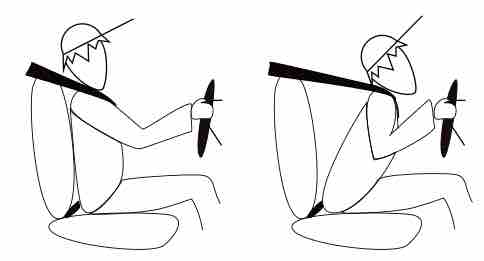History
Sir Isaac Newton was an English scientist who was interested in the motion of objects under various conditions. In 1687, he published a work called Philosophiae Naturalis Principla Mathematica, which described his three laws of motion. Newton used these laws to explain and explore the motion of physical objects and systems. These laws form the basis for mechanics. The laws describe the relationship between forces acting on a body and the motions experienced due to these forces. The three laws are as follows:
- If an object experiences no net force, its velocity will remain constant. The object is either at rest and the velocity is zero or it moves in a straight line with a constant speed.
- The acceleration of an object is parallel and directly proportional to the net force acting on the object, is in the direction of the net force, and is inversely proportional to the mass of the object.
- When a first object exerts a force on a second object, the second object simultaneously exerts a force on the first object, meaning that the force of the first object and the force of the second object are equal in magnitude and opposite in direction.
The First Law of Motion
You have most likely heard Newton's first law of motion before. If you haven't heard it in the form written above, you have probably heard that "a body in motion stays in motion, and a body at rest stays at rest." This means that an object that is in motion will not change its velocity unless an unbalanced force acts upon it. This is called uniform motion. It is easier to explain this concept through examples.
Examples
If you are ice skating, and you push yourself away from the side of the rink, according to Newton's first law you will continue all the way to the other side of the rink. But, this won't actually happen. Newton says that a body in motion will stay in motion until an outside force acts upon it. In this and most other real world cases, this outside force is friction. The friction between your ice skates and the ice is what causes you to slow down and eventually stop.
Let's look at another situation. Refer to for this example. Why do we wear seat belts? Obviously, they're there to protect us from injury in case of a car accident. If a car is traveling at 60 mph, the driver is also traveling at 60 mph. When the car suddenly stops, an external force is applied to the car that causes it to slow down. But there is no force acting on the driver, so the driver continues to travel at 60 mph. The seat belt is there to counteract this and act as that external force to slow the driver down along with the car, preventing them from being harmed.

Newton's First Law
Newton's first law in effect on the driver of a car
Inertia
Sometimes this first law of motion is referred to as the law of inertia. Inertia is the property of a body to remain at rest or to remain in motion with constant velocity. Some objects have more inertia than others because the inertia of an object is equivalent to its mass. This is why it is more difficult to change the direction of a boulder than a baseball.